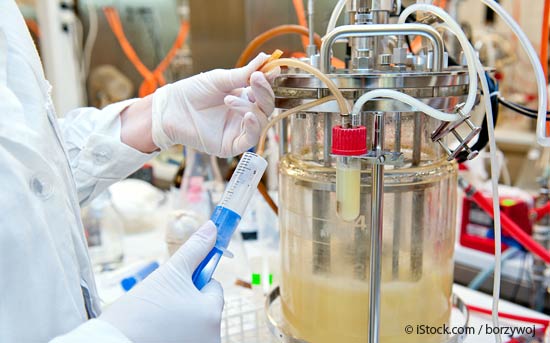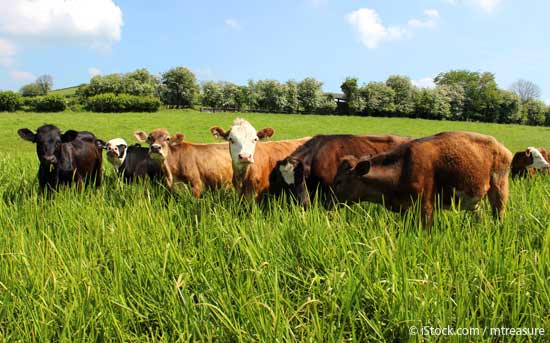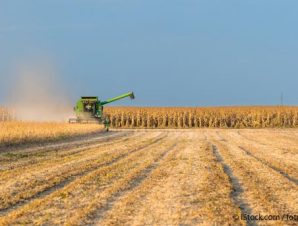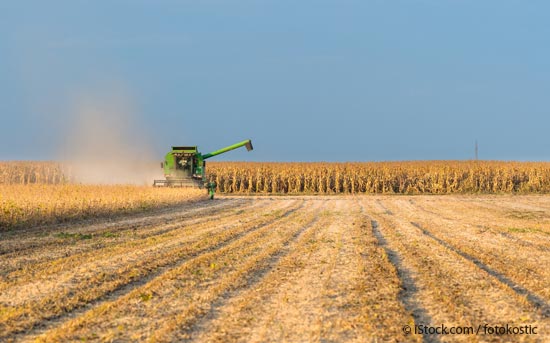Controversy Over Fake Meat Burger Heats Up as Documents Reveal FDA Safety Concerns
More Information
By Dr. Mercola
Three years ago, I wrote about the safety questions looming over the meat substitute known as Quorn, a fungus-based ferment that hit the U.S. market in 2002. Quorn was originally developed by Imperial Chemical Industries, one of the largest chemical companies in the U.K. The fungus used to make quorn is Fusarium venenatum, which is Latin for “venomous.”
Since its inception, a number of studies1 have raised concerns about Quorn’s safety, especially in people with food- and/or mold allergies. An early study by the manufacturer found 10 percent of 200 human subjects developed nausea or stomachache after eating Quorn.2 The Center for Science in the Public Interest (CSPI) maintains an adverse report collection site for Quorn-related illnesses, which include:3
- Nausea
- Cramps and/or diarrhea
- Forceful vomiting
- Anaphylactic reactions
- Death4
Enter the Impossible Burger
The Quorn brand now has competition from Impossible Foods and its meatless, “bleeding” burger.5,6,7,8,9 Contrary to lab grown meat10 (which may hit the U.S. market as early as next year11), this meat substitute contains a mix of soy, wheat, coconut oil, potatoes and “heme,” the latter of which is derived from genetically engineered yeast.
Impossible Foods was founded in 2011 by Pat Brown, a Stanford University chemist. A primary ingredient in the Impossible Burger is genetically engineered soy leghemoglobin, which releases a heme-like protein when broken down. This protein is what gives the plant-based patty its meatlike look, taste and texture, and makes the patty “bleed” when cooked.
It is important to recognize that soy is loaded with lectins and can cause major problems in many individuals. Ideally, soy is best avoided unless it is fermented.
While the company refers to it as “heme,” technically, plants produce non-heme iron, and this is technically GE yeast-derived soy leghemoglobin.12 Heme iron only occurs in meat and seafood. A main difference between heme and non-heme iron has to do with its absorbability. Plant-based non-heme iron is less readily absorbed. This is one of the reasons why vegans are at higher risk of iron-deficiency anemia than meat eaters. Moreover, while soy leghemoglobin is found in the roots of soybean plants, the company is recreating it using GE yeast. As explained on the company website:13
“Heme is exceptionally abundant in animal muscle — and it’s a basic building block of life in all organisms, including plants. We discovered how to take heme from plants and produce it using fermentation …
We genetically engineer yeast to make a key ingredient: heme. The process allows us to produce the Impossible Burger at scale with the lowest achievable environmental impact. We start with the gene for a protein called leghemoglobin, a heme protein that is naturally found in the root nodules of soy plants …
We add the soy leghemoglobin gene to a yeast strain, and grow the yeast via fermentation. Then we isolate the leghemoglobin, or heme, from the yeast. We add heme to the Impossible Burger to give it the intense, meaty flavor, aroma and cooking properties of animal meat.”
Meatless GE Plant Burger Is New Investment Darling
The Impossible Burger resembles meat “right down to the taste and beeflike ‘blood,'” The New York Times notes,14 and has become a hit in some circles. So far, the company has raised $257 million from investors,15 which include Bill Gates, Khosla Ventures, Facebook co-founder Dustin Moskovitz’s Open Philanthrophy Project, Li Ka-shing (a Hong Kong billionaire) and Singapore’s sovereign wealth fund, Temasek Holdings.
But is this “environmentally-friendly,” animal-free meat patty all it’s cracked up to be? From my perspective, a key feature of healthy food is being as natural and unprocessed as possible, and meat alternatives such as the Impossible Burger and Quorn involve the highest level of processing imaginable. These products are manufactured from start to finish, and involve the use of man-made ingredients.
Even more importantly, real, whole food such as meat contain a complex mix of nutrients and cofactors that you cannot recreate by an assembly of individual components. As a general rule, I believe man-made foods are vastly inferior to natural, whole foods and always will be. Outperforming nature is a tall order, and no one has succeeded yet. As such, I believe extreme caution is warranted.
Apparently, so does the U.S. Food and Drug Administration (FDA). As reported by The New York Times:16
“[I]ts secret sauce — soy leghemoglobin … has raised regulatory questions. Impossible Foods wants the [FDA] to confirm that the ingredient is safe to eat. But the agency has expressed concern that it has never been consumed by humans and may be an allergen, according to documents17 obtained under a Freedom of Information request by the ETC Group as well as other environmental and consumer organizations …
‘FDA believes the arguments presented, individually and collectively, do not establish the safety of soy leghemoglobin for consumption,’ agency officials wrote in a memo they prepared for a phone conversation with the company on Aug. 3, 2015, ‘nor do they point to a general recognition of safety.’ Impossible Foods can still sell its burger despite the FDA findings, which did not conclude that soy leghemoglobin was unsafe. The company plans to resubmit its petition to the agency.”
Impossible Foods Quick to Rebut NYT Article
Needless to say, Impossible Foods insists the burger is perfectly safe to eat, arguing the key ingredient, “heme,” is “an ancient molecule found in every living organism.”18 The FDA disagrees, and has asked the company to demonstrate safety in humans, not only for the heme protein derived from its soy root but also for 40+ other proteins that make up this GE yeast-derived soy leghemoglobin.
According to the FDA, the company’s assessment of the possible allergenicity of its product is lacking. As reported by Global Justice,19 “In discussion with FDA, Impossible Foods … admitted that up to a quarter of its ‘heme’ ingredient was composed of 46 ‘unexpected’ additional proteins, some of which are unidentified and none of which were assessed for safety in the dossier.”
“‘This rush to market is the Silicon Valley mindset,’ said Michael Hansen, a food safety expert who is the senior staff scientist at Consumers Union, an advocacy group. ‘They think because they’re doing something disruptive, the regulations that apply to other companies don’t apply to them,'” New York Times journalist Stephanie Strom writes.
Dana Perls, senior policy analyst at Friends of the Earth, echoed Hansen’s sentiment, telling the Los Angeles Times,20 “The concern is that these biotech startups and these new companies using genetically engineered applications are rushing products to market inspired by investment and not public safety.” In another article, Perls was quoted saying:21
“Under no circumstances should any food company ignore FDA safety warnings and put consumers’ health at risk. The FDA must be the authority when it comes to determining food safety, and that means overhauling the broken regulatory process so that companies like Impossible Foods cannot self-regulate and rubber stamp their products as safe.”
Impossible Foods was quick to issue a rebuttal to Strom’s piece. In “Impossible, the Unofficial Correction of the NYT,”22,23 the company writes:
“Impossible Foods has complied with all federal food safety regulations since 2014. Its key ingredient, soy leghemoglobin, has been considered ‘generally recognized as safe,’ or GRAS, since 2014, when a panel of top food safety experts found it was safe to eat. This finding by the experts constitutes what is referred to as a ‘self-affirmed GRAS.’ The effect of a self-affirmed GRAS is that food companies are in compliance with federal regulations and may market the product.”
|
|
+ |
 |
|
Manmade food versus Real food — One contributes more problems than it solves, while the other offers solutions to many interconnected environmental problems.  |
||
Self-Affirmed GRAS Is Not Solid Proof of Safety
While the company has not done anything illegal, it’s worth noting that establishing self-affirmed GRAS is nothing to brag about. GRAS is an antiquated system that allows novel chemicals and ingredients into the food supply without stringent testing and safety review. The problem stems from the fact that the concoctions used in processed foods today didn’t exist in the 1950s when the GRAS amendment was written into law.
At the time, GRAS was meant to apply to common food ingredients like vinegar and baking soda — regular cooking ingredients known through their historical use as being safe. Nowadays, however, novel GE and/or manufactured ingredients end up slipping through this loophole. The introduction of man-made ingredients into the food supply without stringent testing and verification of safety was never the intention of this law.
A significant part of the problem is that food companies are allowed to determine, on their own, whether an ingredient is GRAS. Food companies do not even need to submit their GRAS findings for FDA review. Again, this would not be a problem if we were talking about baking soda or vinegar but, today, all sorts of man-made ingredients are being self-affirmed GRAS.
All a company needs to do is hire an industry insider to evaluate the ingredient, and if that individual determines that it meets federal safety standards, it can be deemed GRAS.
In the quote above, Impossible Foods admits the safety of their Impossible Burger is based on “a panel of food safety experts,” which determined the soy leghemoglobin proteins are similar to natural proteins and hence safe. But similar and identical are two different things. Moreover, who are those experts? Do they have conflicts of interest? The mere fact that such experts are being paid by the food company increases the likelihood they’ll give the food two thumbs-up.
In this case, Impossible Foods appears to write off the allergen concern relating to their GE substance because their product already carries a wheat and soy allergen warning. But what if the proteins turn out to have allergenic properties unrelated to wheat and soy? If that’s the case, a wheat and soy allergen warning is insufficient.
Are Consumers Placed in Harm’s Way?
So, does self-affirmed GRAS comply with federal food regulations? Yes. Does that mean the product has been proven safe? Not necessarily. Jim Thomas, research program manager for the ETC group, noted that Impossible Foods did not seek FDA approval for its GE heme additive as a color additive, which has stricter safety regulations, despite touting the GE heme as the core component that gives the Impossible Burger its distinct red “blood” qualities.
According to Thomas:24
“The FDA told Impossible Foods that its burger was not going to meet government safety standards, and the company admitted it didn’t know all of its constituents. Yet it sold it anyway to thousands of unwitting consumers. Responsible food companies don’t treat customers this way. Impossible Foods should pull the burgers from the market unless and until safety can be established by the FDA and apologize to those whose safety it may have risked.”
Impossible Foods CEO Aims to Eliminate Meat From Human Diet
According to Impossible Foods’ founder and CEO, Pat Brown — a self-professed vegan — his incentive for producing the meatless, “bleeding” burger is to eliminate the need for animal foods in the human diet.25 Part of his argument is that plant-based diets are more sustainable and environmentally-friendly. While I agree with his view that people eat too much meat, and the worst kind — factory farmed meat — monocultured GE crops are hardly the picture of sustainability.
I also don’t think eating GE yeast excretions readily qualifies as a “plant-based” diet. It really falls under ultra-processed food, all of which are best avoided if you care about your health and longevity. In addition to that, there’s the issue of the Impossible Burger failing to provide certain key nutrients typically obtained from meat. For example, the Impossible Burger does not contain cholesterol.
Ultimately, Impossible Foods wants to “produce all the foods we [traditionally] get from animals much more sustainably using scalable ingredients from plants … We’re after 100 percent of the market, not a niche of people avoiding meat or being health conscious.” According to the company website, “We are already developing other types of meat and dairy. Our team of scientists and food researchers can make chicken, pork, fish or yogurt entirely from plants.”26
It’s one thing to be vegan by choice. It’s another entirely to eliminate animal foods for everyone. There are a number of problems with strict veganism, as you eliminate many necessary nutrients. Once you start talking about a GE-based vegan diet the risks are bound to be even higher.
Where to Find the Most Wholesome Food
Brown dismisses the notion that livestock play an important role in sustainable agriculture. In my view, this is a fatal error, as the evidence shows grazing livestock are indeed part of the overall, long-term answer to many of our environmental problems. It may not be readily evident how food animals contribute to our ecological stability and sustainability, but agricultural and soil experts who understand the system as a whole have done a great job explaining it, and I’ve interviewed several such experts over the years.
One of the best things you can do if you want to eat meat and care about environmental sustainability is to purchase animal products certified 100 percent grass fed by the American Grassfed Association. Many can also easily reduce their meat consumption, as most people eat far more than they need for optimal health. Fake foods are, in my view, not a viable answer to our environmental problems. Organic, regenerative farming is.
You can help steer the agricultural industry toward safer, more sustainable systems by supporting your local farmers and choosing fresh, local produce or grow some of your own. If you live in the U.S., the following organizations can help you locate farm-fresh foods:
|
✓ American Grassfed Association The goal of the American Grassfed Association is to promote the grass fed industry through government relations, research, concept marketing and public education. Their website also allows you to search for AGA approved producers certified according to strict standards that include being raised on a diet of 100 percent forage; raised on pasture and never confined to a feedlot; never treated with antibiotics or hormones; born and raised on American family farms. |
|
EatWild.com provides lists of farmers known to produce raw dairy products as well as grass fed beef and other farm-fresh produce (although not all are certified organic). Here you can also find information about local farmers markets, as well as local stores and restaurants that sell grass fed products. |
|
Weston A. Price has local chapters in most states, and many of them are connected with buying clubs in which you can easily purchase organic foods, including grass fed raw dairy products like milk and butter. |
|
The Grassfed Exchange has a listing of producers selling organic and grass fed meats across the U.S. |
|
This website will help you find farmers markets, family farms and other sources of sustainably grown food in your area where you can buy produce, grass fed meats and many other goodies. |
|
A national listing of farmers markets. |
|
✓ Eat Well Guide: Wholesome Food from Healthy Animals The Eat Well Guide is a free online directory of sustainably raised meat, poultry, dairy and eggs from farms, stores, restaurants, inns, hotels and online outlets in the United States and Canada. |
|
✓ Community Involved in Sustaining Agriculture (CISA) CISA is dedicated to sustaining agriculture and promoting the products of small farms. |
|
The FoodRoutes “Find Good Food” map can help you connect with local farmers to find the freshest, tastiest food possible. On their interactive map, you can find a listing for local farmers, CSAs and markets near you. |
|
The Cornucopia Institute maintains web-based tools rating all certified organic brands of eggs, dairy products and other commodities, based on their ethical sourcing and authentic farming practices separating CAFO “organic” production from authentic organic practices. |
|
If you’re still unsure of where to find raw milk, check out Raw-Milk-Facts.com and RealMilk.com. They can tell you what the status is for legality in your state, and provide a listing of raw dairy farms in your area. The Farm to Consumer Legal Defense Fund27 also provides a state-by-state review of raw milk laws.28 California residents can also find raw milk retailers using the store locator available at www.OrganicPastures.com. |
Source:: Mercola Health Articles




 Body Charge Nutrition is a premium nutritional supplement provider based in Western Canada offering only products and information that are of the highest quality and integrity. Through knowledge and personal experience, it is our goal to assist you with taking control of your health.
Body Charge Nutrition is a premium nutritional supplement provider based in Western Canada offering only products and information that are of the highest quality and integrity. Through knowledge and personal experience, it is our goal to assist you with taking control of your health.